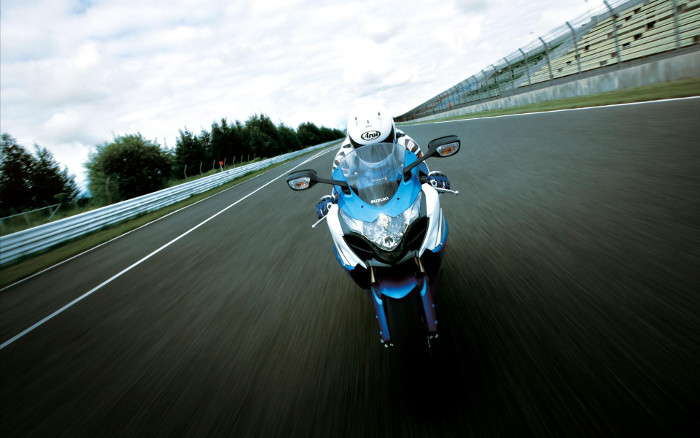Little thing to know about the motorbike you're on
If you control your motorcycle up to a speed of 100km / h, you will encounter a stream of air moving equivalent to a level 10 hurricane. Why is that? That is not everyone knows.
You have seen a storm report, in which the reporter is trying to scream and cling to a traffic sign or trunk to avoid being blown by the storm. But obviously, they are not the only ones who face the power of winds. A motorcyclist will also expose himself to the same power. But why could the windstorm blow people away while riding a motorbike?

A resistance is created on the body when a stream of air moves around it.
The answer comes from a single phenomenon: air resistance. Richard Perdichizzi, technical teacher at the Aerospace Department, MIT explains: "A resistance is created on the body when a stream of air moves around it."
In both cases, riding a motorbike and wind storm, the air stream moves next to your body with the same speed of 100km / h. But the size of drag is different. It depends on two factors: the area and shape of the contact surface of the object.
According to Perdichizzi: "A normal person will create an area of 0.7 square meters of air stream exposure." But that's when you stand up straight. While just turning the body 90 degrees or sitting down, the contact area has decreased. Your body has to endure much less resistance.
This is exactly what motorcyclists did. They sit with their legs closed, and they can bend their heads and heads down to minimize the area of contact with the air stream. However, despite achieving an optimal posture, this is not enough.
The speed of super-motors can range from 200 to 500 km / h, equivalent to the winds of super-level 17 to level 29. They are described as being able to wobble high-rise buildings to epidemic small artificial islands.
Therefore, the shape of the motorcycle now becomes important. The exterior appearance of the vehicle from large pieces to small contours is optimized according to aerodynamic principles. The ultimate goal is that the air stream that comes into contact with the car only deflects instead of being blocked directly as the wind hits a box-shaped plane.

A wind has a velocity of 160km / h, which is equivalent to a level 14 hurricane that creates about 1,200 Newton thrust per square meter.
A simple example, the calculation shows that a drop-shaped object is subject to a drag force 30 times smaller than the box shape, even though you can see that their cross section is the same. The smaller drag makes the person sitting on the car and the motorbike not blown off the road. It also helps to save fuel for vehicles.
So, what is the difference from reducing the contact area and the shape of a motorcycle compared to a person standing in a storm? According to Perdichizzi, a wind has a velocity of 160km / h, which is equivalent to a level 14 storm that throws about 1,200 Newton per square meter. It was strong enough to move cars and turn on trees.
"When someone stands in a storm like this, they will suffer a 900 Newton force. While at the same speed at 160km / h, riders will only be partially affected, " Perdichizzi said.
So with a bit of aerodynamic knowledge, you can explain the difference between being exposed to wind when standing in a storm compared to riding a motorbike.
- Things to keep in mind when riding a motorbike in hot sun
- Tips for starting motorcycles on cold days
- Not only cars but now autopilot - the future has arrived?
- Notes when using a motorbike on a hot day
- New environmentally friendly motorbike
- History of the first motorcycle
- Revealing the name of the motorbike you're on
- What do I notice when riding a summer motorbike?
- Riding a motorcycle is as fast as a storm but why not get blown away?
- Video: The world's fastest motor-driving robot
- 5 tips to help motorbike save gas
- Note when driving on a drizzle
 'Fine laughs' - Scary and painful torture in ancient times
'Fine laughs' - Scary and painful torture in ancient times The sequence of numbers 142857 of the Egyptian pyramids is known as the strangest number in the world - Why?
The sequence of numbers 142857 of the Egyptian pyramids is known as the strangest number in the world - Why? History of the iron
History of the iron What is alum?
What is alum?